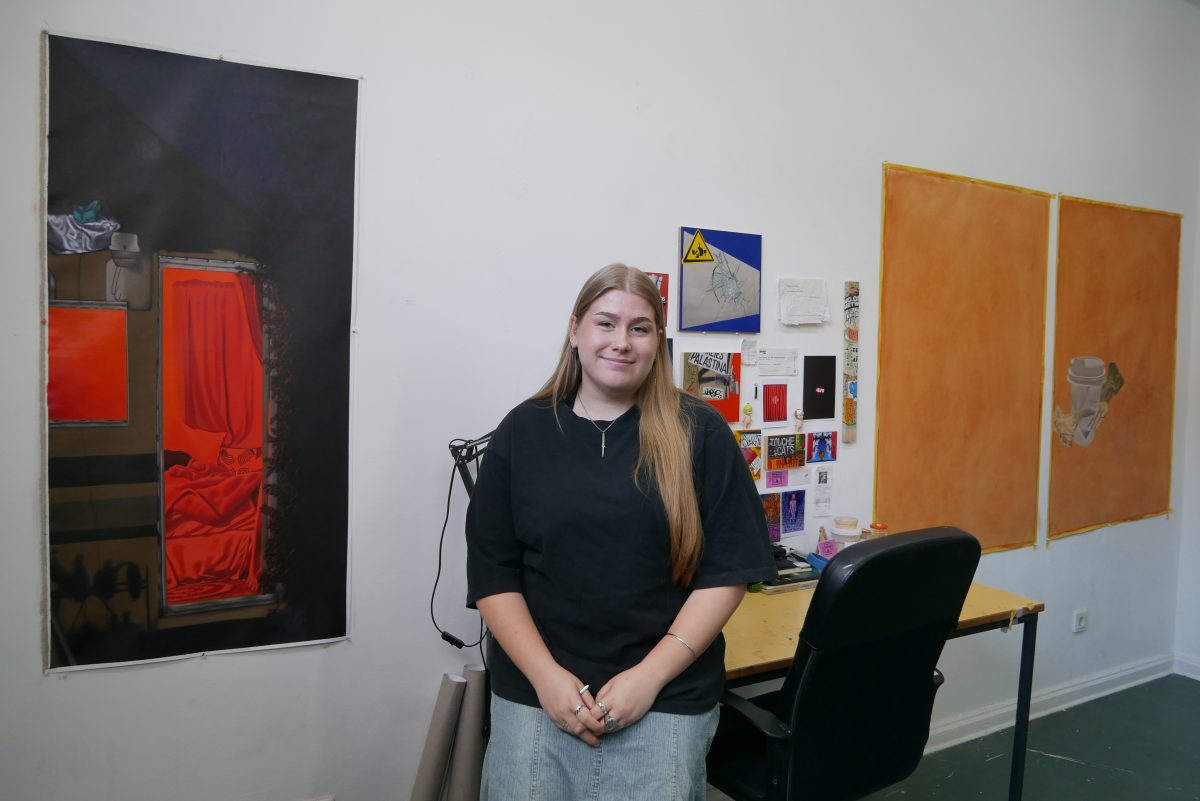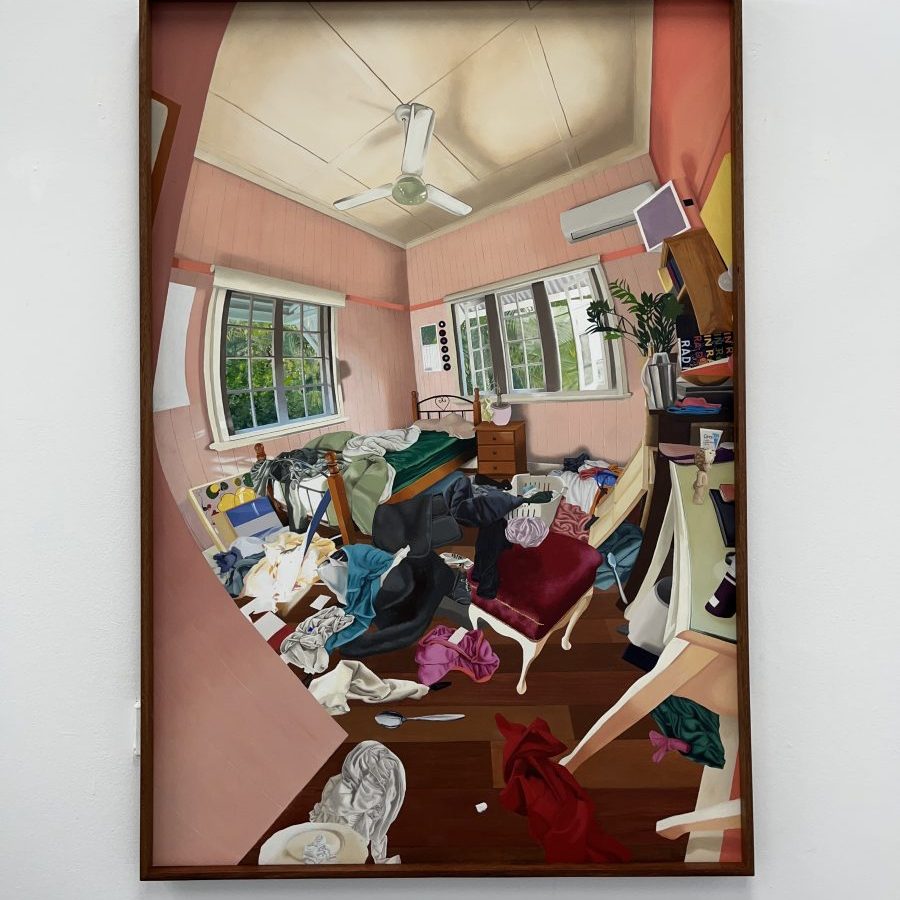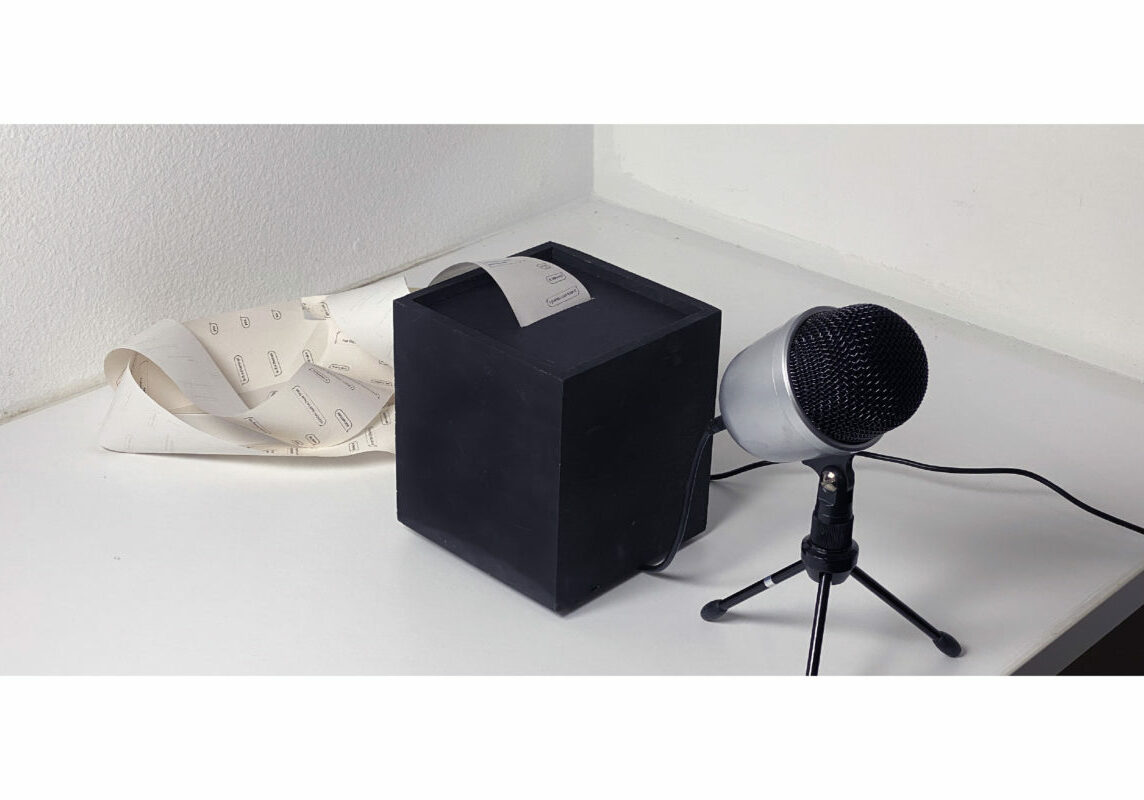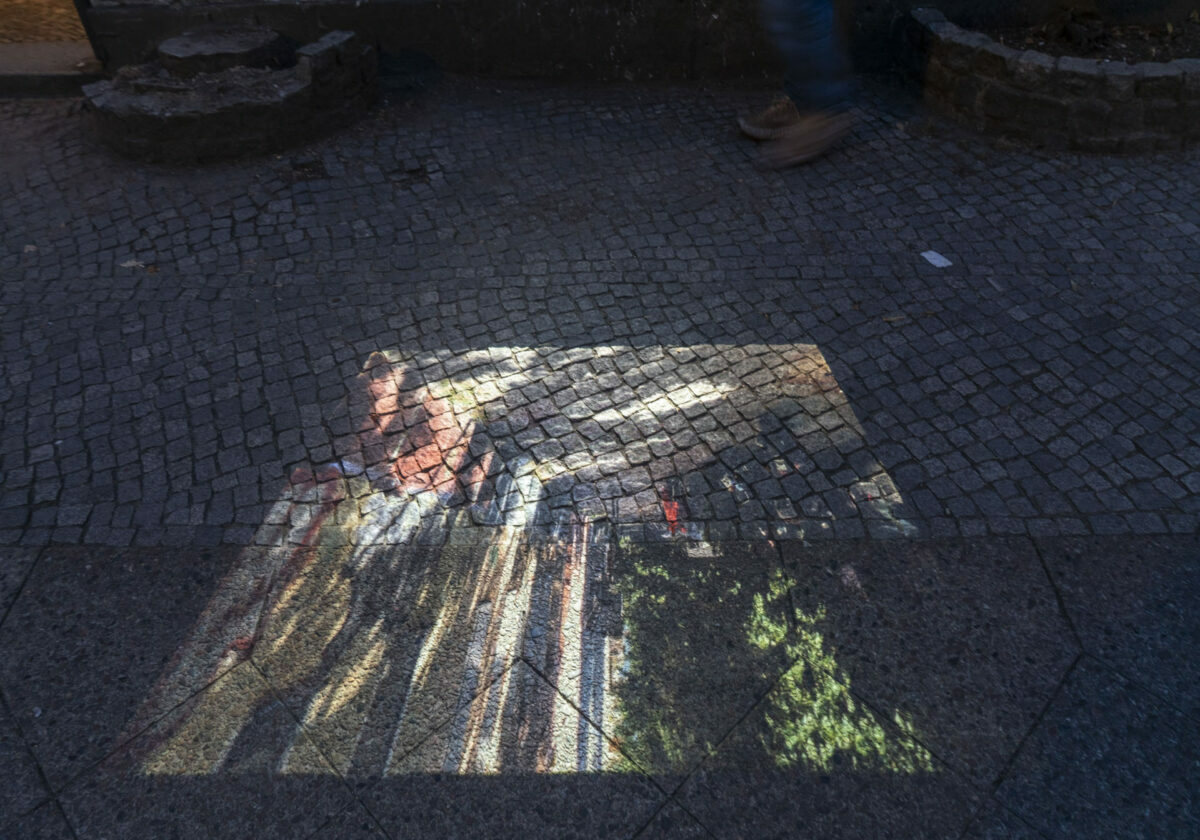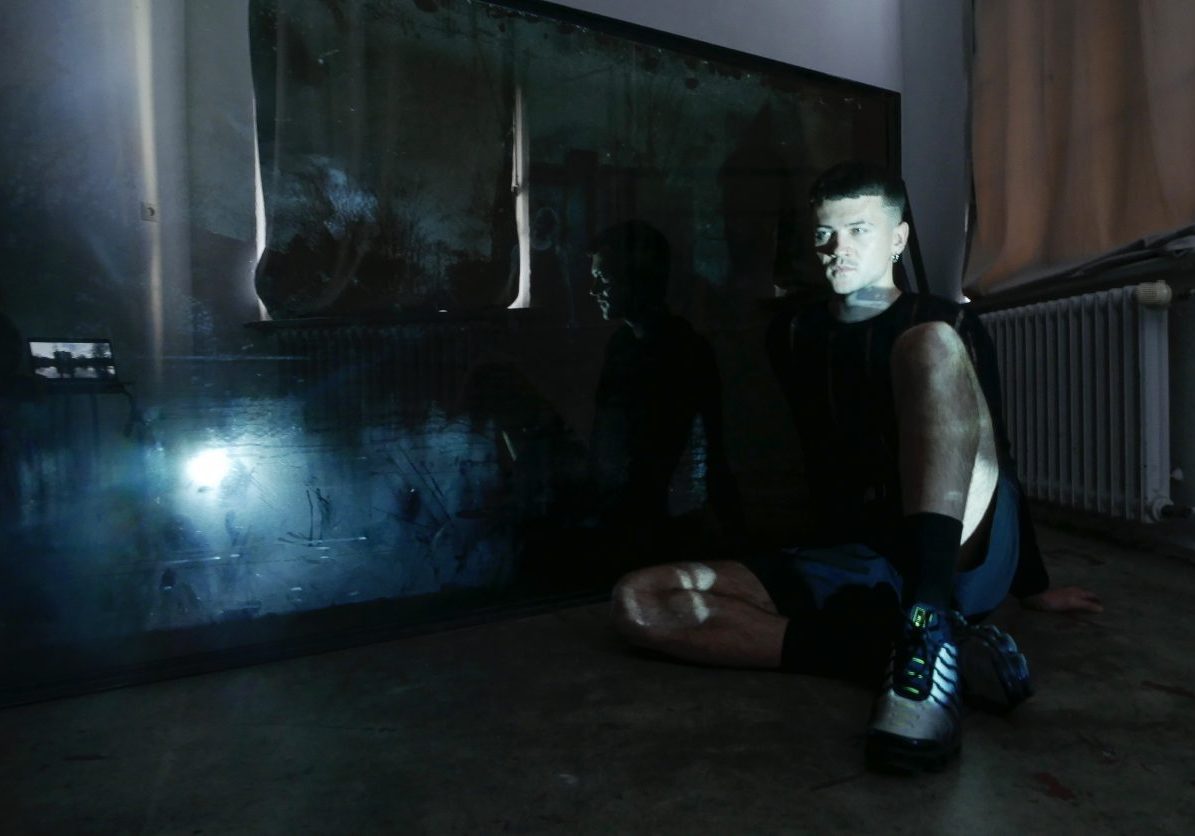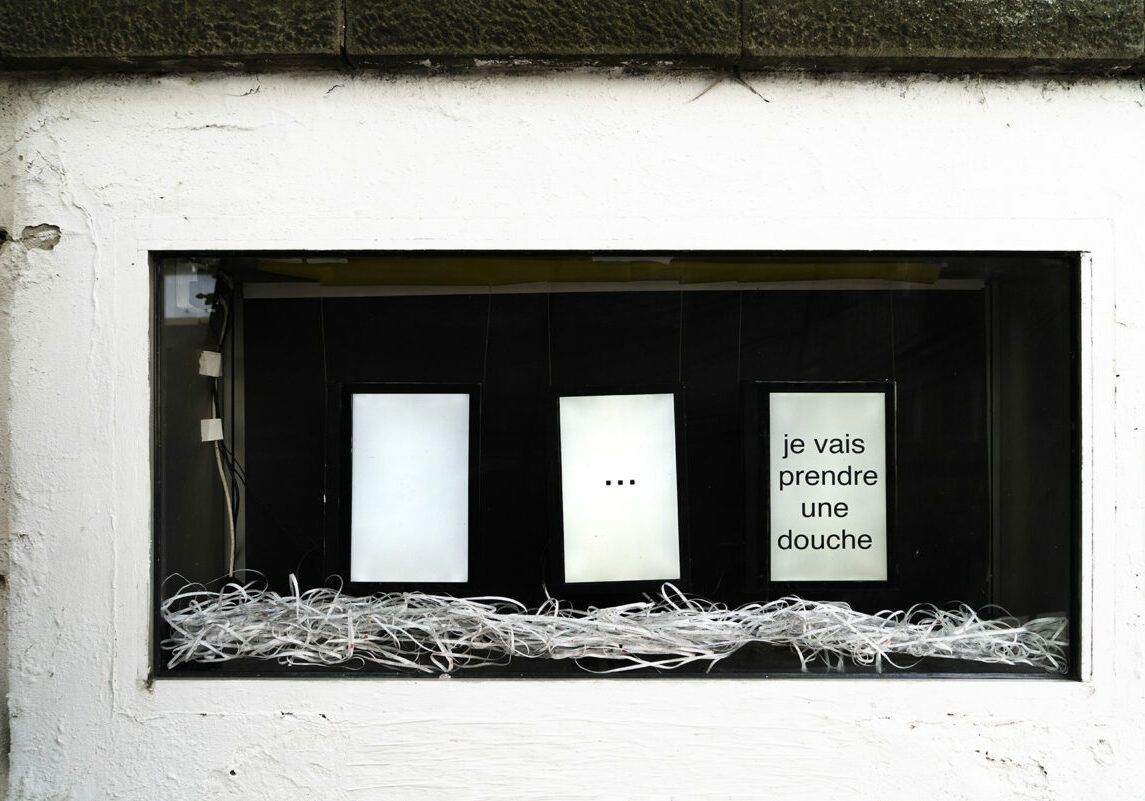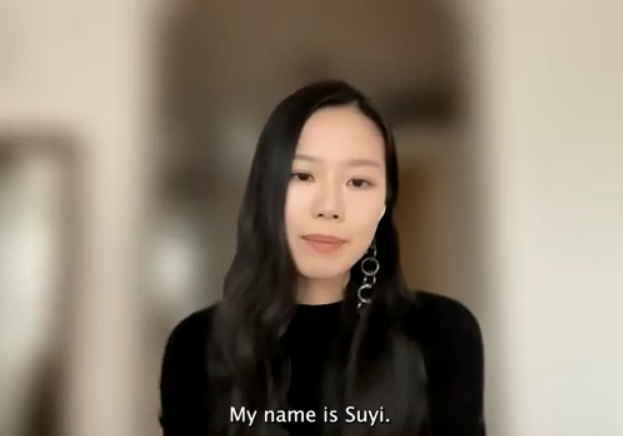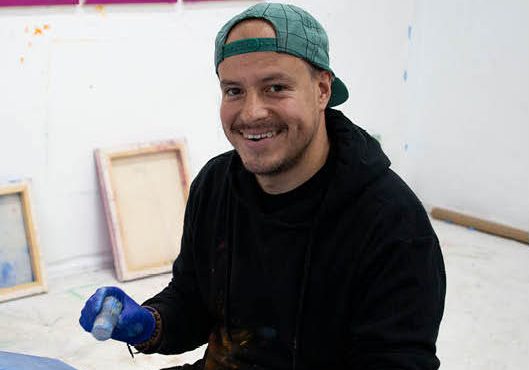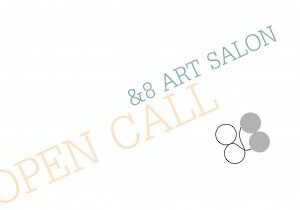Meet the Artist // Toyah Robinson
Toyah Robinson’s art captures the interconnectedness of our experiences and spaces. From noticing city stickers to feeling connected through shared experiences, she presents these moments in her work.
Can you start by giving us an introduction about yourself? How did you start making art?
My name is Toyah Robinson, I’m an artist from Australia, I’m based in Queensland at the moment. I first got into painting when I was a kid, probably how everyone starts in primary school, with potato stamps and paint. I just fell in love with art and I was always encouraged to pursue it by my parents, which I’m really, really privileged and grateful for as well, and then it was just something that stuck. I was good at it when I was younger and then I was good at it in school, so it just made sense to study it afterwards as well. I went to Queensland College of the Arts and loved doing that. I graduated last year, and now I’m here pursuing my practice.

Do you have any anecdotes that had an impact on your practice or on your way of being an artist?
I’m not really sure. I’m sure a lot of other creators would understand what I am about to say. There’s always this innate desire to make artwork and to create and to do stuff, and I feel like that’s always been there. Making art has always just made sense. Then I guess that also links into the idea of what I usually paint, which is the everyday. Having an innate desire to create also means that you’re always looking for inspiration in places and in people, and I feel that definitely comes out in my paintings as well.
Can you talk about the subjects of your paintings? How did your practice evolve?
I stopped painting portraiture because I wanted to move into capturing people more through their space rather than through how they appear. That was kick-started by painting personal spaces like bedrooms, especially in states of chaos. So, it is about depicting things that people would usually hide away. When it comes to messy bedrooms, if people come over you would usually close the door, you would clean up, it’s not really something that people see unless they’re really close to you. Capturing an intimate state and then reifying it for public consumption in an impersonal space like a white cube became a really interesting idea to me. Portraiture stopped being something fascinating that I wanted to include in my practice. I kept carrying on, painting interior spaces, bedrooms still occur, but I’ve also done paintings depicting the interiors of trains, for example. I really want to do pieces of the interiors of toilets as well. So, my practice revolves around this little balance between impersonal and personal space and sharing those two things with people that you don’t know and people that you do know.
Can you delve deeper into this? When did you start painting intimate messy spaces and why?
I honestly don’t really know when it started. I first painted a bedroom I think in 2021 but it wasn’t detailed at all, it was like a blue painting of a blue room but it was really dark so you couldn’t really see any of the details. There was an idea of capturing space but not really sharing it and I feel like that triggered my next step of painting personal space but depicting it properly. I play a lot with perspectives in my paintings: sometimes it is like looking at something from behind or observing the spaces while you are walking. I was always pushing things in making them larger, making them wonky. That ended up becoming more aesthetic choices, but I also leaned into the idea of making more chaos. Mess has been a massive part of my life for as long as I can remember. When I started exploring that a bit more deeply in university it just ended up influencing my work because it was something that impacted me for so long, it made sense that it ended up showing up in my paintings as well. It was just capturing a genuine moment in time and the progression of things building up over time before you clean it and it starts again. I think my own experiences are what has led me to paint things like that.
What about your process? Can you describe it step by step and talk more about your preferred mediums?
Oil painting is obviously my medium. I have always loved it.
I love to paint on wood mainly because it’s such a flat surface and I really like flatness in my work because I’m depicting something that’s quite 3D. I like creating depth while the painting still remains flat and it looks like it’s been printed almost. You can still see painterly stuff in it. But here wood just wasn’t an option because it would be too expensive to ship back home, so it made sense to go back to painting on canvas or linen. It’s still been really enjoyable. I love painting regardless of what I’m painting on, but I think I still do have a preference over flat surfaces like wood or like aluminium composite panel, that is also really flat.
In regards to the art process there’s a really big relationship between photography and painting in my work. Pretty much all of my references for my paintings come from photos. Most of the time I will edit them. I’ll photoshop things in, photoshop things out, turn things, make things bigger, stretch things out, shrink things down. I do that in order to find a composition that I’m happy with before I start painting it. Then the edited photo just becomes a direct reference, so it doesn’t really change afterwards. When I paint it it stays the same maybe besides some minor adjustments to color palettes.
You’re very young, but what is your relationship with the art market and the art world in general?
I don’t really know if I would have a relationship with the art world yet. I am just making connections as I go and I think that this first residency has been great for that, especially for meeting people who’ve been in the industry a lot longer than I have and getting advice from them and hearing their perspectives on art and the art world and the art market has been really good for some insight and also knowledge that I might not have gained prior. I would obviously like to make more connections and break into the art market a little bit more, if I sell work that’s great. I want to make art and if it ends up selling and people like it that’s great but it doesn’t feel mandatory. I’m planning on doing my master’s in teaching so I can have a second source of income and I don’t have to rely on making art.
Why did you join this residency? Why did you choose Berlin? Is it having an influence on your work?
So in my final year in university we did a course called professional practices and one of our assignments was to research a city in regards to the arts so you would look into artist-run initiatives or residencies or galleries and I ended up choosing Berlin for my project and while I was researching I fell in love with it and the sheer amount of creatives and artists that live here. I thought that it would be a really good place to try and do a residency. After I graduated university I really wanted to do a residency to kick start me making art independently, even though residencies still have structures in place that help you make stuff as well. So, after researching Berlin, I looked into doing one in Berlin and it’s been incredible. There’s so much inspiration here for my work especially considering what I depict and compared to back home. The street art and graffiti and the way that the space appears and how it’s been decorated by people are really fascinating to me and that has definitely influenced the work that I’ve made here and I’ve branched off a little bit in regards to some of the stuff that I’m depicting at the moment. Berlin’s been a really good influencing factor in my work I’d say and my camera roll is filled with photos and stuff that I’m planning on painting in the future as well. I think it’s going to continue impacting my work later on.
What is the main difference you find between Berlin and Australia?
Oh my god so much! The arts culture is very different so that’s been incredible to come here and see that. There’s just so much going on every single week in regards to openings and galleries and meeting new artists. Art is everywhere and it’s so nice. I feel like the arts community is a lot smaller, especially in Queensland, even though it’s great. I think that coming here and being able to open up my understanding of art a little bit and be able to see so much variety and so many different people has been incredible. I feel like three months isn’t long enough to see everything. I feel like there’s still so much more that I want to see and want to do while I’m here which also makes me want to come back.
What are your plans after your residency?
I want to apply to do some exhibitions, maybe also group shows in Brisbane with the art that I’ve made here and then do my master’s in teaching for two years ideally and then just work on my own practice. I want to try to establish myself a bit more back home with the knowledge that I’ve gotten here and the insight that I’ve gained to my practice.
